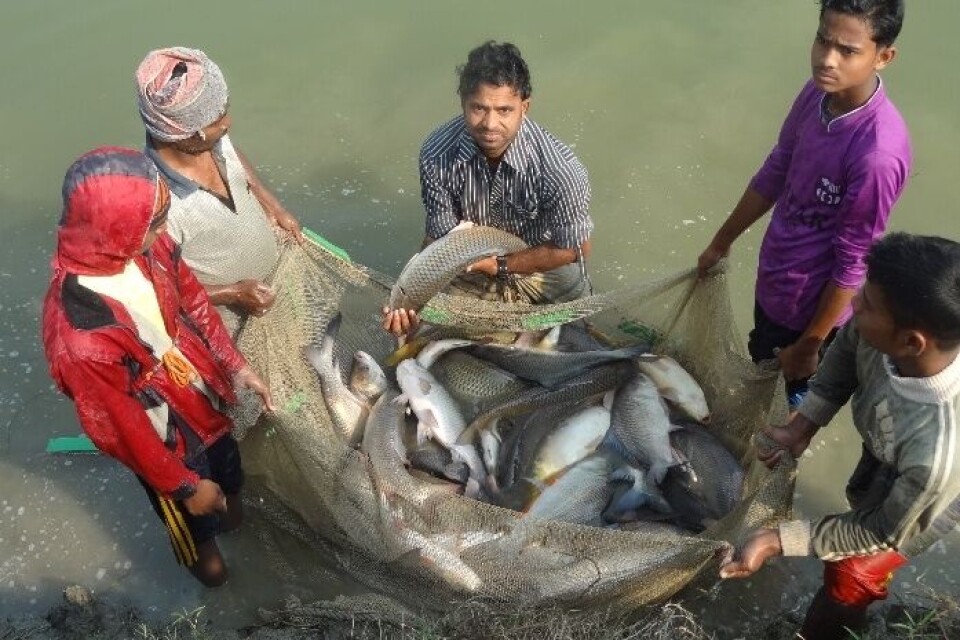
Aquaculture produces 0.49% of man-made greenhouse gases
Global aquaculture generates around the same amount of greenhouse gas (GHG) emissions as the sheep industry but is more efficient, according to new research.
In the first study of its kind, researchers from Scotland’s Rural College (SRUC), the UN Food and Agriculture Organisation, feed manufacturer Cargill and WorldFish found that, in 2017, the fish farming sector generated 0.49% of man-made GHG emissions, or 263 million tonnes of carbon dioxide equivalent (MtCO2e).
“The modest emissions reflect the low emissions intensity of aquaculture, compared to terrestrial livestock (in particular cattle, sheep and goats), which is due largely to the absence of enteric CH₄ (methane) in aquaculture, combined with the high fertility and low feed conversion ratios of finfish and shellfish,” said the authors.
Feed production
The research was carried out to raise awareness of how and why GHG emissions arise in aquaculture supply chains.
It found that, while GHGs in aquaculture vary by system, the emissions from feed production generally dominate. Some systems, especially shrimp, also use a lot of energy for pumping water.
The geographical pattern of emissions closely mirrors production, i.e. most of the emissions arise in the regions with the greatest production: East Asia and South Asia.
Emissions also correlate closely with production for most species-groups, e.g. cyprinids (carp) account for 31% of emissions and 31% of production. However, there are exceptions: shrimp account for 21% of emissions but only 10% of production, while bivalves produce 7% of emissions but represent 21% of production.

Sustainable expansion
SRUC climate change researcher Dr Michael MacLeod, who led the study, said: “Global aquaculture makes an important contribution to food security and is also a driver of economic development. But to enable sustainable expansion of aquaculture, we need to understand its contribution to global greenhouse gas emissions and how it can be mitigated.
“While the emissions from fish farming are unlikely to reach the levels of, for example, beef farming, it is important for the industry to consider ways to reduce emissions, which can also improve financial performance.
“There are lots of ways to reduce emissions, including developing genetically improved breeds suitable for lower feed conversion rates, improving health, using more precise feeding methods, and improving on-farm energy efficiency. Feed is the main source of emissions in most systems, so some of the reduction can be achieved before we even get to the fish farm, in the production of feed materials.”
The paper is published at Nature.com.






















































